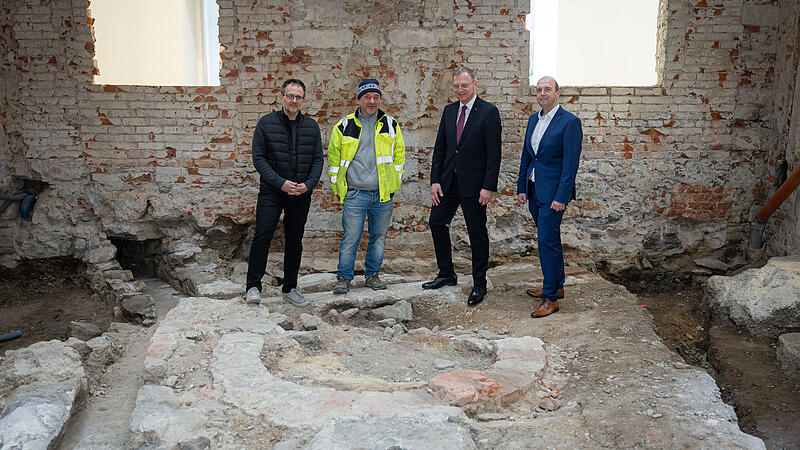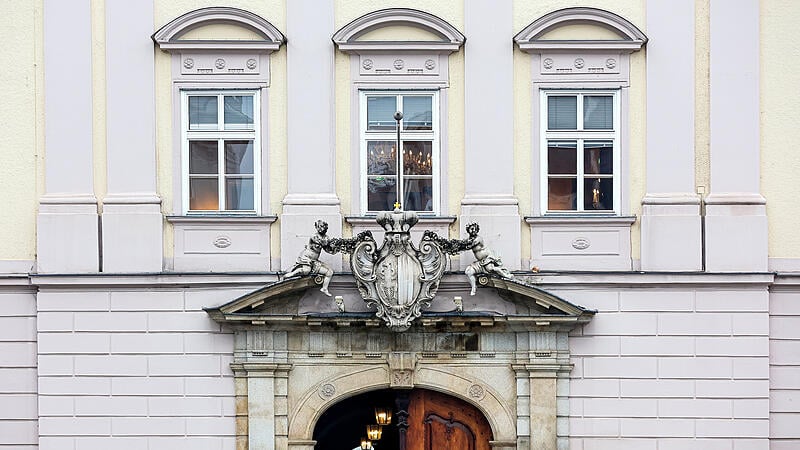Image: VOLKER WEIHBOLD

Image: ANTONIO BAYER (COUNTRY O…)
Archaeological excavations revealed remains of medieval walls and ceramic finds from the 13th and 14th centuries in the lower layers, as well as the well surround with the associated walking level made of rolled stones, the state of Upper Austria announced in a press release on Friday.
- More Linz: The center of Urfahr needs a traffic concept (OÖNplus)
According to plans from 1780 and 1839, today’s inner courtyard was originally largely built with rooms and was significantly enlarged when it was converted into a government building after 1786, it said. The well that has now been discovered is included in the plan from 1839. The archaeologist from the specialist company commissioned for the excavations, Christoph Faller, therefore assumes that he will find further remains of the former Minorite monastery. You could also come across remains of late medieval houses that were demolished during the construction of the monastery in 1717.

Image: ANTONIO BAYER (COUNTRY O…)
Not only is the country house historically valuable, it is also in “a historically interesting place,” said Governor Thomas Stelzer (ÖVP). A stone arch bridge was discovered in front of the country house 16 years ago. Like this bridge, the fountain should also be visible to visitors after the renovation work is completed. In what form will be decided after the archaeological investigations have been completed, added architect Martin Urmann.
- Also read: Health questions: Community nurses will soon be helping throughout Linz
My themes
For your saved topics were
new articles found.

info By clicking on the icon you can add the keyword to your topics.
info
By clicking on the icon you open your “my topics” page. They have of 15 keywords saved and would have to remove keywords.
info By clicking on the icon you can remove the keyword from your topics.
Add the topic to your topics.
Source: Nachrichten




